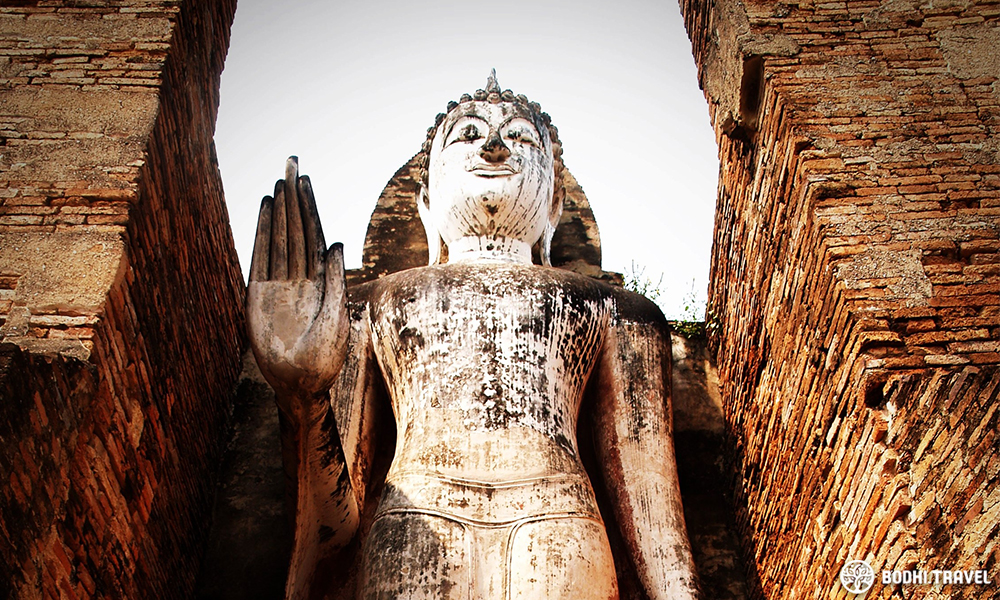
Mudras - Abhaya
BODHI ADMIN - Posted on August 30, 2019 - 4,224 Views
The Abhaya (fearlessness) mudra is a commonly seen mudra on Buddha statues. The mudra signifies the dispelling of fear and the giving of protection, peace and benevolence.
In this mudra, the Buddha is usually standing with His right arm bent and raised to shoulder height, His right hand is pointing upwards with His palm open and fingers closed together. In some statues, both hands are facing outwards and upwards, thus making a double abhaya mudra.

According to Buddhist tradition, the Abhaya mudra originated from the story of the Buddha’s cousin, Devadatta. Devadatta was jealous of the Buddha and plotted to kill the Buddha. He made many attempts of which the third attempt involved the fierce elephant – Nalagiri.

Devadatta's third attempt to kill the Blessed One was to make the fierce man-killer elephant, Nalagiri, drunk with liquor. When Nalagiri saw the Buddha coming at a distance, it raised its ears, tail and trunk and charged at him. As the elephant came close, the Buddha radiated his loving-kindness (metta) towards the elephant.
So vast and deep was the Buddha's love that as the elephant reached the Buddha, it stopped, became quiet and stood before the Master. The Buddha then stroked Nalagiri on the trunk and spoke softly. Respectfully, the elephant removed the dust at the master's feet with its trunk, and scattered the dust over its own head. Then it retreated, with its head facing the Buddha, as far as the stable, and remained fully tamed.
Usually elephants are tamed with whips and weapons, but the Blessed One tamed the elephant with the power of his loving-kindness.
Excerpt from https://www.buddhanet.net/e-learning/buddhism/lifebuddha/2_5lbud.htm

The Abhaya mudra is representative of the fearlessness of the Buddha and also the fearlessness that is imparted and taught by the Buddha. In the Abhaya Sutta, the Buddha described the four types of people who have fear. These four types of people have
1. passion, desire, fondness, thirst, fever and craving for sensuality
2. passion, desire, fondness, thirst, fever and craving for body
3. done what is not skillful and have done what is evil, savage and cruel
4. not arrived at certainty to what is the True Dhamma
The practitioner who ceases fear do so through abandonment of "passion, desire, fondness, thirst, fever, and craving" for sensuality and body, done what is skillful and beneficial, and has arrived at certainty with regard to the True Dhamma.
For detailed explanation, kindly refer to the link below:
https://www.accesstoinsight.org/tipitaka/an/an04/an04.184.than.html
MORE ARTICLES: Mudras – Dhammacakra
MORE ARTICLES: Journey to Discover Thai Buddhism




